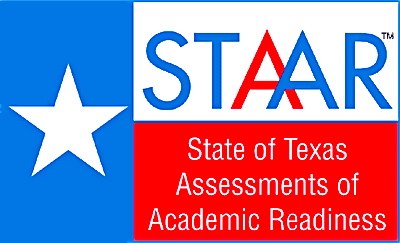Make Schools Independent
Clinging to tradition can lead to misleading beliefs. This is frequently apparent in Texas.
There will be at least one news item every day somewhere in the state about an independent school district, as in the Brenham Independent School District.

Referring to them as independent is misleading. School districts in Texas are about as independent as a 1,000 pound bear confined in a 10x10 foot cage. Actually, that bear may be more independent than Texas school districts.
He can get up and roam the limits of his cage or lay down to rest whenever he likes. He just has to rely on someone or something outside the cage to provide his food and water.
Not so with Texas school districts. Someone in Austin or Washington, D.C. tells them how many days schools have to be in session, what books can be used, what can be served in the cafeterias or stocked in vending machines, how many and what tests that have been prepared by all-knowing bureaucrats will be given, how and where those tests will be graded, and how the test scores will impact the school’s ratings.

An article in a recent issue of Time magazine discussed the impossibility of firing incompetent teachers with tenure and union membership. Although teacher union memberships are rare in Texas, if they exist at all, there have been reports of problems with trying to terminate poor performing teachers in the state.
Some Texas districts are even required to collect property taxes from owners within the district to be used in other districts.
Those directions from on high leave Texas school district boards of trustees with the possible independence to employ and fire administrators and to establish a budget.
There are even limits on their control of administrators. Last week there were several news items on the state requirement for a local “independent” school district to hold public hearings to consider the retirement of that school’s superintendent.
The state level hot shots who usurped the authority of local school districts stepped in and directed that all Texas students be taught from their curriculum dubbed the Texas Essential Knowledge and Skills. How well that curriculum was being followed was to be checked in the state mandated Texas Assessment of Knowledge and Skills tests (the TAKS).

The TAKS results did not paint pretty pictures, so the smart guys up above switched to the fancier name of The State of Texas Assessments of Academic Readiness (STARR). Now it seems that STAAR results are no better than they were under TAKS.
Has anyone ever asked why? Could the cause of those dismal scores be the destruction of the independence of local school districts?
In my early school days (yes, that is ancient history), school districts operating under the unfettered control of the superintendent and boards of trustees concentrated on the three R’s--reading, writing, and arithmetic-- and turned out highly qualified leaders like FDR, General Dwight Eisenhower, Admiral Chester Nimitz (from Texas), and many others.
When Austin and Washington, D.C. took over, however, local schools went from the three Rs to STAARs, and the U.S. began to drop steadily in academic ratings compared with those in other industrialized nations.
So here’s the perspective.
Here are eight suggestions that might get Texas education back on the three Rs course.
First, abolish all state and federal agencies dealing with education. Then repeal all statutes and regulations issued by those agencies and by any agency that might not have direct connections with education.
Second, copy success. Determine what the countries surpassing us in educational results are doing and then adopt some of those practices.
Third, discard political correctness and accept that all are not created equal. Some are born to be welders while others are born to be doctors. Welders do not need to learn Shakespeare, and doctors could do without learning the properties of various metals.
Fourth, return discipline to the school rooms. Three male high school teachers told me they retired on the first day possible for the sole reason of their lack of authority to maintain discipline in their classrooms.
Fifth, establish schools as educational institutions. This means that, for the eight hours or so that a student is in school each day, his or her time will be devoted full time to academic or vocational studies. There will, of course, have to be some time for relaxing, exercising, and dining, but all extra-curricular activities like sports, band, drama, etc. will be banned on school property.
Sixth, recognize and pamper the academically high performing students as rock stars instead of the quarterbacks and high performing pitchers from the local private sports club that will emerge to replace the school teams.
Seventh, use the millions of dollars now used to build and maintain elaborate sports arenas for a tiny minority of students to create teacher compensation packages that will attract and retain the best and the brightest.
Eighth, implement a teacher evaluation system like that used for Army officers of my era. This would require principals to evaluate each teacher annually on a standard evaluation form. An ideal system would have every classroom equipped with a silent monitor to allow principals unobtrusively to monitor their charges at random times. The principals, of course, would have to have unfettered authority to mentor, reassign, or terminate those under his supervision.
Implementing these suggestions would result in the loss of employment for thousands of bureaucrats and change public schools to prepping for academic scholarships instead of athletic scholarships. Accordingly, they have the same chance as that proverbial snow ball in hell.
After a decade or two of more educational decline, however, maybe someone will take a second glance.
enough





